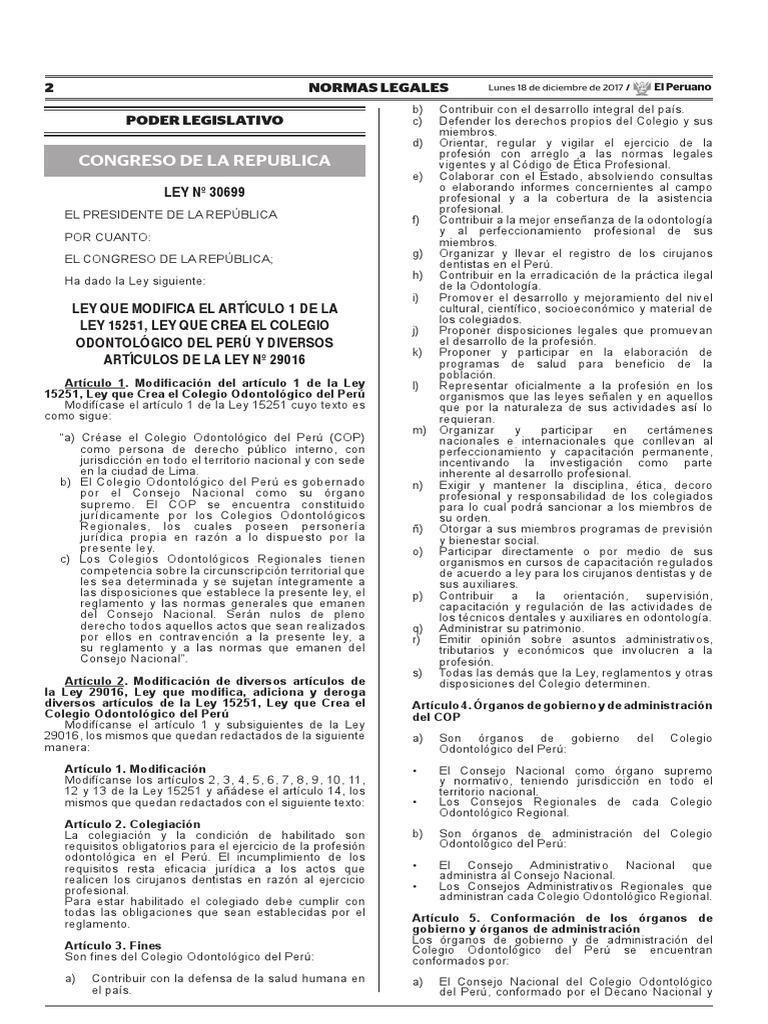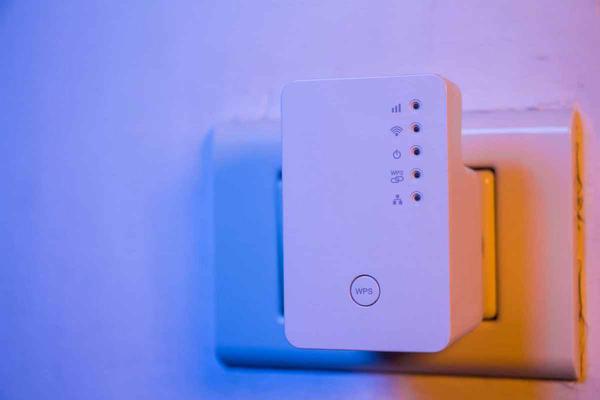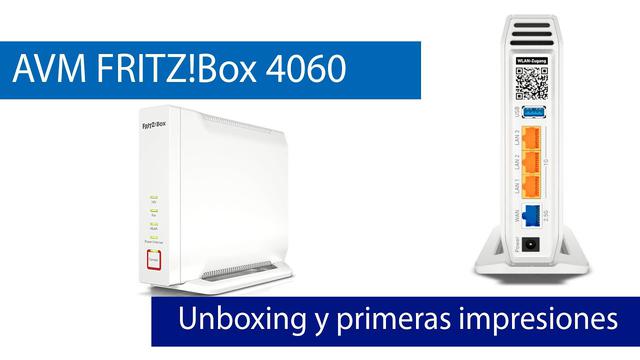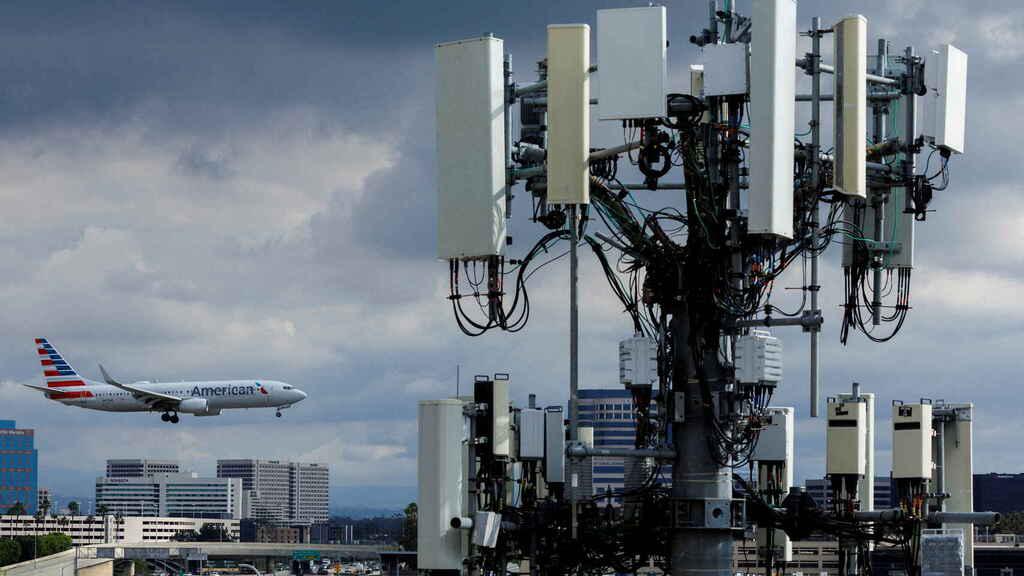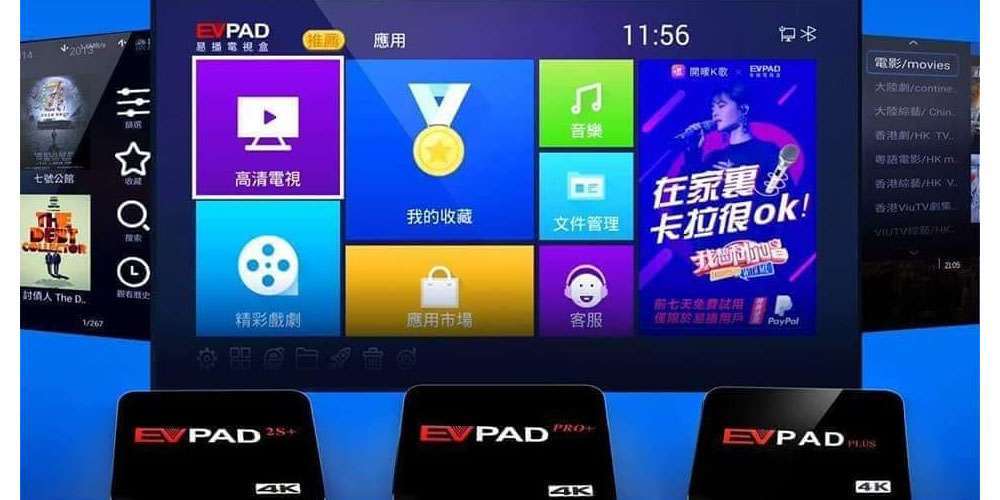What is Wi-Fi 6? Advantages and novelties of the new standard
| New naming | Old version |
|---|---|
| Wi-Fi 1 | 802.11a |
| Wi-Fi 2 | 802.11b |
| Wi-Fi Wi-Fi 3 | 802.11g |
| Wi-Fi 4 | 802.11n |
| 802.11ac | |
| Wi-Fi 6 | 802.11ax |
Wi-Fi 6
Wi-Fi 6 is a wireless transmission standard that corresponds to Wi-Fi 802.11ax. It is not a new way of connecting to the Internet, but rather an update of what already existed. Specifically, the sixth generation Wi-Fi. An update with improvements, more efficient, faster and with less energy consumption but that stands out, above all, for better management on multiple devices.
This certification is already available to product manufacturers and some current smartphones are already supported. It will be a matter of years before all gadgets and mobile devices adopt the new wireless standard.
Differences with Wi-Fi 5
Wi-Fi 5 was released in 2013 under the name Wi-Fi 802.11ac and is currently the most common in most gadgets and mobile devices. This standard only uses 5 GHz bands and does not have most of the technologies that allow the Internet to flow correctly in case of several connected devices.
Other differences between Wi-Fi 5 and Wi-Fi 6 is that we went from having eight spatial streams instead of four streams, that we have wider channels of 80 MHz or 160 MHz compared to the 40 MHz that the older standard with 5 GHz band. There are also differences in bandwidth as the new standard is capable of creating “sub-channels” which translate into more paths to send to different access points. It also improves MIMO technology that allows twice as many simultaneous transmissions: from four to eight in the case of Wi-Fi 6
| Wi-Fi 5 | Wi-Fi 6 | Launched in... | 2013 | 2019 |
|---|---|---|
| Bands | 5 GHz | 2.5 GHz and 5 GHz |
| Bandwidth | 20MHz, 40MHz, 80MHz, 80+80MHz and 160MHz< /td> | 20MHz/40MHz at 2.4GHz, 80MHz, 80+80MHz and 160MHz at 5GHz |
| FTT sizes | 64, 128 , 256, 512 | 64, 128, 256, 512, 1024, 20148 |
| Higher modulation | 256-QAM< /td> | 1024-QAM |
| ODFMA | No, only OFDM | Yes |
| MU-MIMO | Only for download | Available in upload and download and better speed |
| Color BSS | No | Yes, reduces interference |
| Target Wake Time | No | Yes, it allows to consume less energy |
Advantages of Wi-Fi 6
Better management of multiple devices
There are more and more connected devices everywhere: speakers, appliances, televisions, tablets, consoles, phones or even connected toys. For this reason, Wi-Fi 6 technology will achieve lower latency when many devices access the router simultaneously. To achieve the best management of multiple devices, Wi-Fi works with new technologies such as OFDMA or others such as MU-MIMO already existing and now improved.
OFDMA
One of the most interesting technologies of Wi-Fi 6 is OFDMA (Orthogonal Frequency Division Multiple Access) which allows the same router to be able to provide or “serve” the Internet to several devices at through a single channel. That is, OFDMA technology is capable of dividing any used channel into smaller frequency allocations that distribute the information. The improvement is included in upload and download and latency will be significantly reduced compared to other connections. Instead of sending a large amount of data to one client while the others are waiting, OFDMA delivers data to all devices at once.
MU-MIMO
Along with OFDMA, MU-MIMO technology was already present in Wi-Fi 5 but now it becomes essential. What it allows is that there are a total of eight transmissions available so that the quality of the bandwidth is sufficient for several users accessing the router simultaneously. Until now, the usual MU-MIMO technology allowed four devices at the same time and it will be multiplied to send to all of them at the same time, as you can see in the image.
Avoid interference
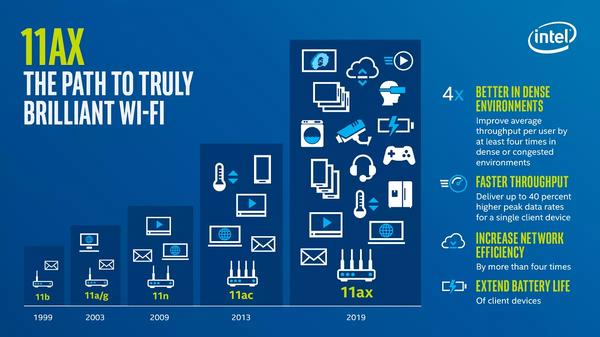
The third of the technologies that includes Wi-Fi 6 and that allows greater efficiency is Color BSS (Base Service Station). In this case, it is not a technology that is focused on the connection of multiple devices but rather on avoiding interference . What Color BSS does is reduce interference by assigning colors for better identification. Each network is identified with different colors so that the interference from the neighbors is not included in the connection. When the access point detects a connection, it checks the color bit of the BSS and decides.
Greater speed and range
One of the main improvements of Wi-Fi 6, of course, is better speed. Maximum speeds will increase by up to 40% from Wi-Fi 5 to Wi-Fi 6. With Wi-Fi 5, the maximum speed is eight 160MHz 256-QAM channels, each capable of going to 866, 7 Mbps, for a total sum of 6.933Mbps or, rounding up, 7Gbps. While with Wi-Fi 6 it could reach 9.6 Gbps, according to the theoretical maximum speed.
Frequency bands
Until now, Wi-Fi 5 only supported 5 GHz band, but with the release of Wi-Fi 6 we can connect to 2.4 GHz band or 5 GHz band and enjoy the advantages of one over the other. In the case of 2.4 GHz Wi-Fi, it has more interference, but greater range, although less speed. In the case of 5 GHz, we have higher speed and fewer channels overlapping each other, but less range. With Wi-Fi 6 we will be able to operate in both 2.4 and 5 GHz and the 2 GHZ frequency will now be faster.
For example, in WiFi 6 we managed to reach up to 1148 Mbps in the 2.4 GHz band, compared to the 1000 MBps that we achieved with Wi-Fi 4. And in the case of 5 GHz bands, with WiFi 6 we managed to reach up to 2402 Mbps compared to the 2167 Mbps achieved using Wi-Fi 5.
Another of the advantages of Wi-Fi 6 is that it is expected to be compatible with the 6 GHz band. This will mean that we have a better speed in devices that are a short distance from each other or that require a shorter range. For example, to use virtual reality or for high-quality streaming, we would have an ultra-fast connection that would quadruple the current speed and reduce congestion. By the end of 2020, it is expected to have freed up 500 MHz of the 6 GHz band and this would allow for a very little saturated band, with less traffic than the current one, at the time of its launch.
Longer battery life
Manufacturers strive to improve the battery life of mobile phones but new models still have autonomy as a weak point. However, Wi-Fi 6 allows us to better manage energy consumption, within its possibilities. That is, we will spend less battery by being connected wirelessly with our devices. Especially in small and low power devices, especially in IoT devices.
Target Wake Time (TWT) technology included in Wi-Fi 6 allows you to configure schedules on devices so that they only connect when necessary and are not constantly searching for a network or waiting their turn. They will not be connecting and shutting down, but there will be a specific time set to access. When they do not access, they will be in sleep mode When they are not using Wi-Fi, they would go into sleep and would not be consuming battery unnecessarily.
Increased security
Devices and routers now have the ability to support WPA3, but it is not required. The WPA3 security protocol was announced in 2018 and is committed to a data encryption of 192 compared to the 128 bits used by WPA2. This WPA3 protocol allows more security in open networks and public networks and also protects us against brute force attacks.
For a device to be approved as WiFi 6 compatible by the Wi-Fi Alliance, it requires that it have WPA3 security protocol. This will make this wireless network even more secure than the previous ones and we will be more protected against attacks.
Compatible with previous networks
In order to enjoy all the benefits mentioned above, you need to have a compatible device. Of course, this technology will need to be on your router but also on your smartphone or any of the devices with which you want to start enjoying it. Do you have to change all your devices? No. You can change your router to one with Wi-Fi 6 technology without having to change all the gadgets. Any device that is not WiFi 6 can be connected to a router and it will also happen the other way around: a gadget with a WiFi 6 connection will be able to connect to previous networks, although, of course, you will not enjoy the advantages that having a router will allow you more advanced.
If you want to know if a new device you are going to buy (a smartphone, for example) is compatible with Wi-Fi 6, all you have to do is look for the certificate in the list of specifications. As we have explained in the change of nomenclature, you should look for compatibility with Wi-Fi 6 or with Wi-Fi 802.11ax networks.
Improvements in augmented reality, streaming and IoT
As we have said before, WiFi 6 will decisively benefit virtual and augmented reality, video transmission in high quality and the Internet of Things (IoT). These applications will take advantage of the low latency and high speed of the new standard in order to achieve greater development and involvement among the general public.
Society will be able to enjoy environments based on virtual or augmented reality with complete and absolute comfort. In addition, the capacity of streaming video transmission will grow considerably to such an extent that we will be able to view a movie in 8K without practically cuts during its reproduction.
But what will see the most momentum will be the Internet of Things (IoT), as WiFi 6 will help build massive ecosystems of such a tool. More devices with different usage profiles can be easily connected, thus significantly improving the comfort and habitability of homes.
Increasing WiFi connectivity in crowded places
Everyone knows that WiFi speed is lower the more devices are connected to the network. This circumstance can lead to a real problem in crowded places, such as airports, stadiums or public bodies.
The new Wi-Fi standard will solve this problem and help improve the overly congested 2.4 GHz band. Wi-Fi 6 will increase download speeds fourfold in highly congested environments, making it possible for users of a mobile device with this technology have an excellent connection in locations where there is always a high influx of public.
Compatible with Wi-Fi 6
There are devices already compatible with Wi-Fi 6 on the market. For example, mobile phones such as the Samsung Galaxy Note10 or the Google Pixel 4. The first network chips to be certified for this connectivity are:
NETGEAR Nighthawk AX8 RAX80 AX6000
A router compatible with the Wi-Fi 6 standard with simultaneous dual band and four internal and dual antennas that allow us to have connectivity on both bands at the same time. It incorporates a WPS button to connect the equipment quickly without the need to enter the password or it has five Gigabit Ethernet ports for LAN, as well as a WAN port. A router to achieve the best speed and with a complete firmware that will adapt to practically any circumstance or need.
Netgear RAX80 Nighthawk AX8 WiFi 6 Router, AX6000 WiFi Speed, 5 Gigabit Ports, 2 USB 3.0 Ports, Coverage Over 25 DevicesBuy it for EUR 337.90ASUS RT-AX88U
The ASUS RT-AX88U is a High-end router, compatible with Wi-Fi 6 and that allows you to work in the 2.4 GHz band at a speed of up to 1,148 Mpbs or a speed of 4,804 Mbps in the 5GHz band. As usual in this wireless standard, we can enjoy the advantages of MU-MIMO and ODFMA that allow higher speeds in more connected equipment. Like others on this list, it has a WPS button that allows us to connect without having to enter the access password or it has 8 LAN ports and a WAN port.
ASUS RT-AX88U - AX6000 Dual Band Gigabit Gaming Router (Triple VLAN, Wifi 6, PS5 compatible, Ai-Mesh supported, WTFast Game Accelerator, Adaptive QoS, AiProtection PRO, OFDMA, MU-MIMO) Buy it at EUR 292.00ASUS ROG Rapture GT-AX11000
A simultaneous tri-band router with Wi-Fi 6 and eight detachable antennas and four of them dual capable of operating on both bands at the same time. This ASUS router supports the 2.4 GHz band at up to 1,148 Mbps or 5 GHz bands with speeds up to 4,805 Mbps on each of the two 5 GHz bands. It also features two high-performance USB 3.0 ports and features a Complete firmware with all kinds of options such as Wi-Fi for guests, Smart Connect or GPN game accelerator with WTFast.
ASUS GT-AX11000 ROG Rapture - AX11000 Gigabit Tri-Band Gaming Router (Triple VLAN, PS5 Compatible, Aura RGB, 2.5G gaming port, AiProtection Pro, Adaptive QoS, Ai-Mesh support) Buy it at EUR 416.00Huawei WiFi AX3
This model allows simultaneous management of 2.4 and 5 GHz frequencies. For this reason, it is capable of achieving speeds of up to 3 Gbps, supporting up to 128 devices connected at the same time in dual bands and with fluency. Of course, it is compatible with WiFi 6 and if there is something that stands out, it is its excellent price, well below the vast majority of routers compatible with this system. It has a higher bandwidth with 160 MHz, for a lag-free experience on mobile devices
Huawei WiFi AX3 Buy it for EUR 45.56TP-Link AX3000
This WiFi 6 compatible router achieves speeds of 2,402 Mbps on 5 GHz and 574 Mbps on the 2.4 GHz band. The Intel chipset for Wi-Fi, increases processing speed to deliver superior Wi-Fi 6 Gig + performance. We can control the router through voice commands, to make our lives easier by being compatible with Alexa. It is a product that accepts up to 256 devices at the same time thanks to OFDMA technology that quadruples the connection capacity in high-density scenarios. A highly recommended router to put in our house, since the signal will be strong and you should not worry about many devices connecting at the same time.
TP-Link AX3000 Buy it for EUR 88.72Samsung Galaxy Note 10
If you are looking for a mobile phone with which to enjoy all the advantages, the Samsung Galaxy Note10 is one of the smartphones compatible with WiFi 6 A phone with a totally premium design, performance for any task you need and one of the best cameras on the market. In addition, reverse charging and wireless charging technology and the highest speed thanks to the Wi-Fi 6 wireless standard.
Samsung Galaxy Note10 Gray 256 GBBuy it at EUR 308.26
